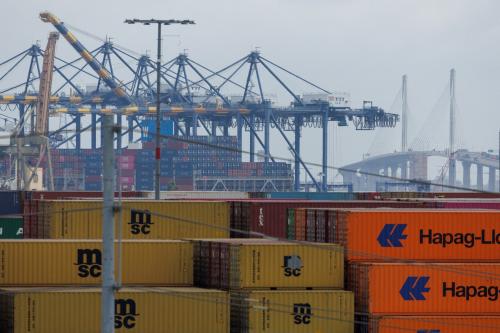The past decade has seen a remarkable widening of global creditor and debtor positions in relation to world GDP, with the lion’s share of net external liabilities accounted for by the United States, and a surge in net global claims, particularly in advanced Europe and smaller economies of advanced Asia. This has occurred despite a compression in global net borrowing and lending, reflected in shrinking current account imbalances. This paper explores the factors underpinning these developments.
While the U.S. has continued to run current account deficits after the global financial crisis, the worsening of the U.S. external position since then reflects primarily the rising valuation of U.S. external liabilities. Booming U.S. share prices (up by over 280% between end-2010 and end-2021) have been the primary driver of these developments. These price gains have increased overall U.S. wealth, but also benefited foreign investors holding U.S. shares. In contrast, gains by U.S. investors holding foreign shares have been much lower, given more modest equity price increases outside the U.S.
Have the countries with growing creditor positions been the largest beneficiaries of rising U.S. asset prices? Not systematically. The emergence of large creditor positions has primarily been a reflection of large current account surpluses, rather than capital gains. This is particularly the case for European advanced economies, with the exception of Norway, whose large sovereign wealth fund benefited from the boom in global equity prices. Among Asian advanced economies, the creditor position of Hong Kong has increased much more rapidly than current account balances would suggest. As for other creditors, valuation gains for large oil exporters are likely to have been substantial, given the large portfolio equity assets held by their sovereign wealth funds in advanced economies, but a more precise assessment is hampered by lack of data on the size and geographical allocation of these countries’ asset portfolios. A group of countries that are collectively net debtors have been large beneficiaries of higher U.S. asset prices. These are English-speaking advanced economies—Canada in particular, but also Australia and the United Kingdom—with large holdings of equity instruments in the U.S. and currencies that have weakened vis-à-vis the U.S. dollar. Across countries, rising external assets are associated with more favorable net government debt developments and a growing footprint of institutional investors such as insurance companies and pension funds, which are likely to hold substantial equity portfolios, including foreign equities.
The paper also highlights a sizable global discrepancy in estimates of external creditor and debtor positions, with estimated liabilities exceeding assets. The most important component of this discrepancy relates to portfolio equity, and reflects a lack of information on the residence of investors holding equity through intermediaries or custodians in financial centers. This is the case for some holdings of U.S. equities, as well as a large amount of investment fund shares issued by Ireland and Luxembourg and sold in global financial centers, including, importantly, the United Kingdom.
-
Acknowledgements and disclosures
The Brookings Institution is financed through the support of a diverse array of foundations, corporations, governments, individuals, as well as an endowment. A list of donors can be found in our annual reports published online here. The findings, interpretations, and conclusions in this report are solely those of its author(s) and are not influenced by any donation.







